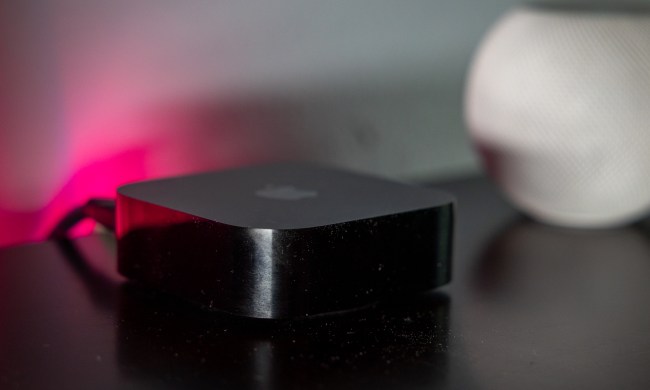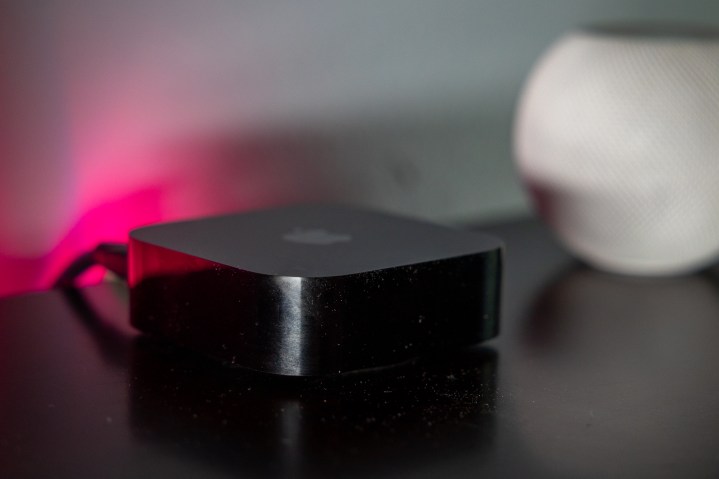
Now that we’ve gotten the whole “Apple TV 4K with a camera” thing out of our system, it’s time to take a more serious look at what we still consider to be the best streaming hardware you can buy. More specifically, this article is about what we’d like to see added to the diminutive box.
First, though, a little context. The current Apple TV 4K — which is the third generation of that model — isn’t all that old, having been released in early November 2022. At the time, we dubbed it built for the future. And that’s definitely still true.
As it stands today, Apple TV 4K is available in two flavors. There’s a 32GB model that only has Wi-Fi for connectivity, and a 128GB model that throws in Ethernet, as well as support for the Thread and Matter smart home protocols. There’s only a $20 difference between the two, and we think that’s money well spent.
As of this point, nothing is imminent, so far as we know. But that doesn’t mean that an update is off the table for 2024.
The form factor
“Form factor” is one of those phrases we really shouldn’t use. But it basically means the size and shape of a thing. To that end, the Apple TV 4K hasn’t really changed much over its three iterations. It’s still about the size of a couple decks of cards. The third-gen model slimmed down ever so slightly and got rid of the active fan — but there’s also a very good chance you never noticed that it had a fan in the first place.
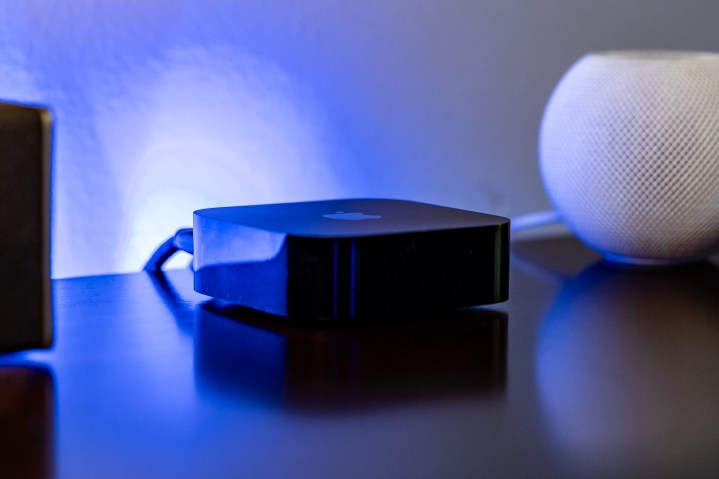
In a world of low-cost sticks and HDMI dongles (OK, and cubes and tubes), there’s nothing inherently wrong with the physicality of Apple TV 4K. It’s a box, sure, and therefore not quite has stealthy as a small streaming stick. But it’s also not all that large, and it’s easy enough to attach it to the back of a TV, if you really want to. (And so long as said TV isn’t mounted flush to the wall.)
There long have been rumors — or at least muffled calls for — some sort of stick-like Apple TV 4K, presumably with a lower price. But there’s just something very un-Apple-like about that. Apple makes products that look and feel “premium,” and it’s doubtful anyone has ever used that word in the same sentence as a stick or a dongle or a puck. (We’re purposefully leaving out any company names with those, because it really doesn’t matter which.)
As much as we scoffed at the idea of tucking a camera into the existing Apple TV 4K design, you can at least understand the desire to have something else — anything else — added to that hardware. It’s a $150 box (if you get the upgraded model like we think you should) that you might well never see again after you initially hook it up. Shouldn’t it do something else?
Maybe. You certainly can make the argument. But we’re not sold on that idea in a world in which the iPhone exists (for its camera, if nothing else) and HomePod Minis are relatively inexpensive.
The internals
If there’s one thing that drives upgrade cycles, it’s what’s inside the box. And by that we mean the chipset. Apple has been using its own silicon since 2010, when it switched from Intel to its own A4 system on a chip. Both the processor and the graphics unit are housed here (the same goes for storage and RAM, of course). Fast-forward more than a dozen years and Apple’s silicon now also includes neural engines.
Let’s look at the three generations of Apple TV 4K, including their release dates.
| Apple TV 4K | Chipset | Release date |
| First generation | A10X Fusion | September 2017 |
| Second generation | A12 Bionic | May 2021 |
| Third generation | A15 Bionic | November 2022 |
The lead time between the first- and second-generation Apple TV 4K models was about three-and-a-half years. We saw about 18 months pass between the second- and third-generation devices.
Silicon isn’t everything, but it’s close. It’s what determines app development. It’s what ultimately decides what other features a device can employ. If and when we get a new Apple TV 4K, we will almost certainly see upgraded Apple silicon on board. It’s as close to a sure thing there can be.
So what to expect? There’s some serious sorcery that goes on when it comes to system-on-a-chip (SOC) development, and we are very much not experts in that. More cores? Fewer cores that work more efficiently? More processing power for AI-enabled features? More RAM? That’s certainly all on the table. It’s just a matter of Apple making it work in a way that keeps the price of the product where it needs to be.

And lest someone say “The next one should be Apple TV 8K!” No. Stop it. There is zero commercial reason for that much resolution.
One softball we will throw out there, though: Apple should bump the base-model Apple TV 4K to 64GB of storage. Yes, it’s notoriously stingy when it comes to that sort of thing. But it’d also be the right thing to do.
And one more: It wouldn’t surprise us to see a bump from Wi-Fi 6 to Wi-Fi 6E. Though it also wouldn’t surprise us to not see that just yet, as it’s still a relatively new standard and there’s a pretty good chance that few homes have wireless routers that work in the 6GHz band.
The remote control
The remote control probably remains the biggest area of complaint when it comes to Apple TV 4K. Yes, the Siri Remote (as it’s officially known) is better than it used to be. But that’s damning with faint praise.
The simple fact is that the Apple TV 4K remote control is still pretty unergonomic. It’s still very thin and very flat and doesn’t exactly find itself cradled in the palm of your hand. Yes, you get used to it, and it’s plenty usable. But I still very much enjoy the feel of the remote that lives in my living room, affixed to a leather cover from Nomad (which you can’t buy anymore).
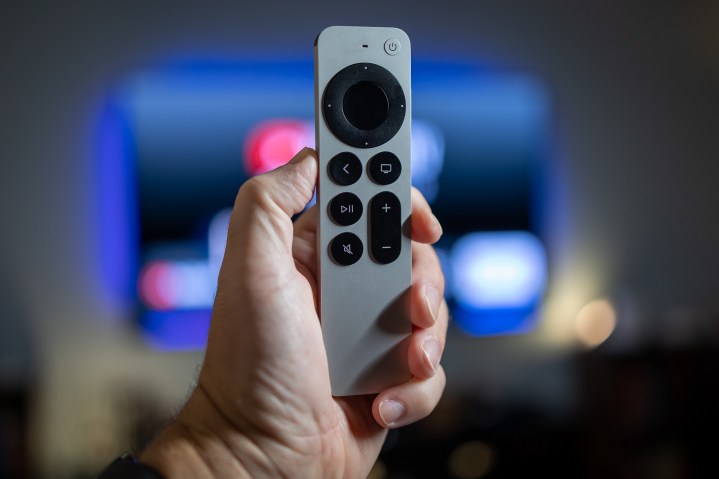
The remote is basically what you’d get if you told an AI-image generator the following: “Design a remote control in the style of a MacBook.” And, yes, that’s not the sort of thing you want to hold in your hand.
The “touch-enabled clickpad” — which really means combination directional pad and trackpad — remains tricky. It’s too easy to accidentally swipe the thing and wreak havoc on the screen. Yes, you can adjust the settings so it only does one thing or the other — either serve as a trackpad or a D-pad. But I shouldn’t have to make that decision.
The change from Lightning to USB-C for charging was welcome. No notes there. And we’re going to stop you right here before you try to suggest Apple add wireless charging — you simply don’t have to charge this thing that often.
The one feature we’d love to see added? A built-in AirTag-like tracker. (I have an actual AirTag tucked into that Nomad leather case.) The Siri Remote is so small and so thin that it’s still extremely easy to lose in a couch, or just misplace anywhere else. Apple has some Bluetooth-based location tracking built in. but it’s not as good as a proper AirTag.
The home screen
No notes.
What, you wanted more? Have you seen the home screen on an iPhone or iPad?
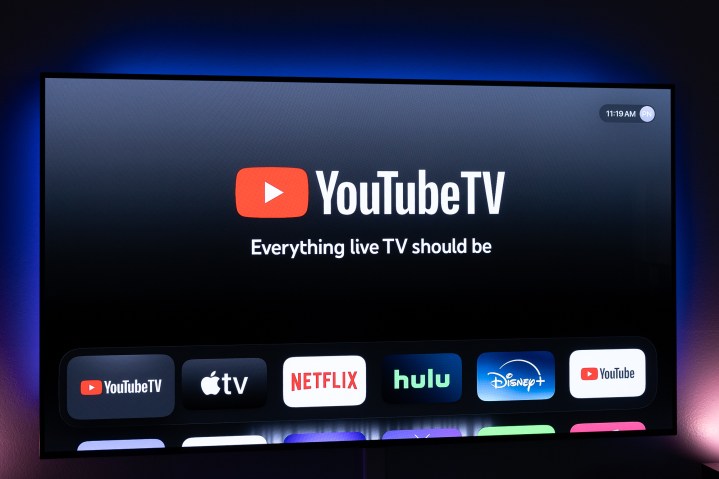
OK, maybe you have. And so maybe you’re thinking “It’d be nice to have some widgets on the Apple TV 4K. Or maybe some more previews of things to watch. More tiles that will let me go right back to whatever I was doing or watching before.”
To which we say: Nope.
There’s a very specific simplicity in the Apple TV home screen. You get icons for apps. And save for the top row (the most important row), which does add shortcuts to individual things, it’s pretty sparse. Just the way we like it.
Look at the competition. We continue to see home screens overdesigned within an inch of their collective life. We continue to see display advertising encroach more every day.
We’re just fine with app icons and very little else, thanks.
There is, however, the Control Center. Hold down the TV button on the remote and you’ll be greeted by it. (You also can navigate to it using the D-pad.) What’s most important is that this is where you’ll find the sleep timer. But we could see Apple making additional tweaks there, too.
The screensaver(s)
This is a little subjective, but I submit that Apple has the best screensavers of any platform. Sure, others have really good ones in their own rights, but Apple just goes that much further with the high-resolution flybys. More of this, please.
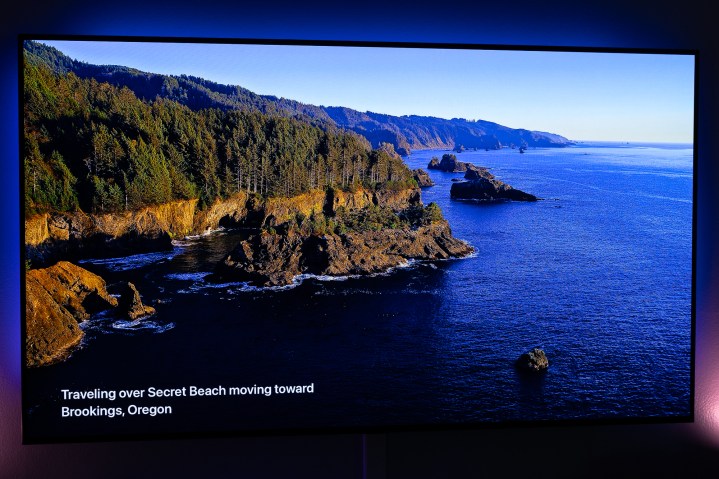
And there’s really not much for us to add here except for this: Apple should continue to offer these for free and resist the temptation to monetize them. Don’t allow ads in them. Don’t put them up for sale. Just allow the secreensavers to be exactly what they are: gorgeous and fantastic.
Gaming
If there’s one place we still want to see some serious improvement on Apple TV 4K, it’s this one. Gaming. It’s sort of an odd space because like the Apple TV 4K itself, it’s not actually ignored or anything. There’s a dedicated button in the Control Center for game controllers.

But the games themselves? You’re going to have to really want to play something if you’re going to play it on Apple TV 4K. Apple Arcade is fine for what it is, but it’s not great. The Siri Remote is not a great gaming remote. You’ll want a game controller.
And when it comes to AAA games? Forget it.
Apple has the hardware. It has the software. It just hasn’t had the inclination to make gaming a serious option on Apple TV 4K, and that’s a shame.
AirPlay for Android
This almost certainly is never going to happen. (I hate that I’m including any sort of caveat on that statement.) Apple will never, ever, provide for native AirPlay on Android devices, which would then let them seamlessly beam things onto an Apple TV.
This isn’t a crazy idea. There are plenty of split households out there, where one spouse is on Android, and the other is on iOS. Mine used to be one. And I thoroughly enjoyed using Apple TV back in those days, even though I was missing out on a fairly major feature by not also using an iPhone. (I did have a Mac, though.)
The ability to use a feature like Chromecast or AirPlay should darn near be a universal right in 2024. That is, the ability to start a video or song — some sort of media — on one device, and them “cast” it (or whatever term you want to use) onto a TV. The phone or tablet or computer then ceases to actually play the video, with the heavy lifting handled by the Apple TV or Chromecast. Those of us of a certain age will remember bygone protocols like DLNA, which never gained traction for one reason or another. Chromecast and AirPlay are where it’s at.
And to that end, at least the television manufacturers have gotten the message and support Chromecast and AirPlay. They don’t care what kind of phone you use.
Apple, of course, prefers one over the other. Apple could choose to do the right thing here, and let you AirPlay something from your Android phone to Apple TV. Or it could just stay stuck in its old ways.
Or maybe (just maybe), “Matter Casting” will become a thing. That’s more likely than Apple changing its tune, anyway.


